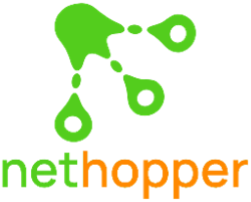Part 2: Increase Workforce Productivity with Unified Generative AI Search
- Claire C.
- May 30
- 3 min read
Updated: Aug 8
The Easy Way to Find and Use Your Company’s Data
By Chris Munford, CEO & Founder, Nethopper
What is Unified GenAI Search?
In Part 1, we discussed businesses’ hidden cost of wasted time searching for information.
In this blog, we’ll address the solution to this corporate waste:
A new method called “Unified Gen AI Search,” a generative AI-powered approach that connects to all enterprise data sources and allows employees to ask questions and get accurate, personalized answers.
This method has two fundamentals: (1) unify the data, and (2) use AI to search it effectively.
Historically, “unifying” the data meant centralizing it into a single data lake or warehouse. However, this approach has many well-documented issues and often does not produce the desired results.
Now, there is a new method that unifies data by keeping it where it is and simply indexing that data for later search and use. This allows users to self-service search and interact with all their up-to-date information at the SaaS source.
This method is also highly compatible with generative AI models and RAG (retrieval augmented generation) data search methods.
Generative AI can enhance the search with natural language queries and contextual answers.
Gen AI not only allows search, but also lets users interact with and get insights from their data that were not possible even just a year ago.
Also, generative AI can help users create content tailored to their tasks and business.
How Unified Generative AI Search Boosts Productivity
If you use a public generative AI service, it will be obvious how Unified GenAI Search boosts productivity. Users can access an AI prompt as their assistant to get:
Faster Access to Information
Eliminates time spent switching apps or waiting on colleagues.
Improved Decision-Making
AI can surface insights, not just files.
Consistent Knowledge Sharing
Reduces duplicate work and institutional knowledge loss.
While this can be applied to any worker, for any task, consider a single example: a product manager (PM) choosing features for the next release. How is a PM to choose? New features? Old bugs? Customer tickets? Highest-paying customer requests? Easiest features to make? Maybe a combination of all of these.
Well, the PM can make data-driven decisions if they consider multiple sources of data, such as:
Ticketing system (e.g., Jira): to get all customer issues
Customer Revenue and Forecast (e.g., Salesforce): to prioritize customers
Team Communication tools (e.g., Slack): to capture internal conversations about features
Internal Doc tools (e.g., Confluence): to capture product features, docs, and roadmaps
Customer Docs (e.g., Google Drive): to store customer documents
Development Tools (e.g., GitLab): to store development activity and estimates
However, this is a ton of data.
For example, the ticket database might have 1,000 tickets since the last release. The PM doesn’t have time to read (and interpret) all of these. So, the PM might decide to fix the issue with the highest number of tickets.
But what impact will that have on revenue? And development? The best decision requires a 360-degree view of all the data.
Generative AI can help the PM read, interpret, summarize, and get insights from all of this documentation in just seconds. This allows the PM to make data-driven decisions.
Enterprise Private, Secure AI
In my next blog post, I’ll explore why enterprises need private, secure AI and what’s needed to get started with unified generative AI search. Read Part 3 now.





